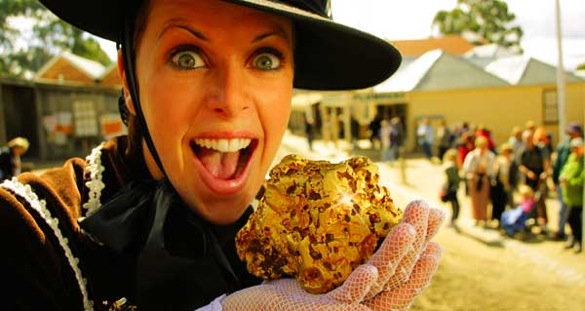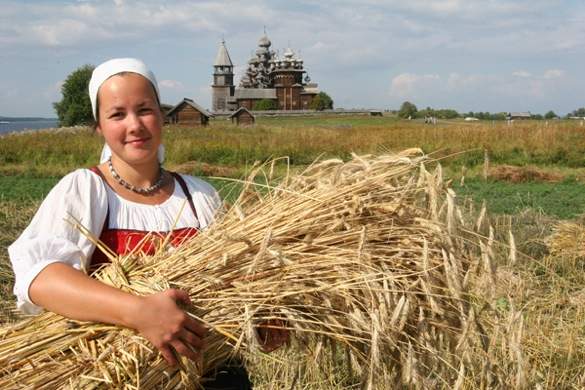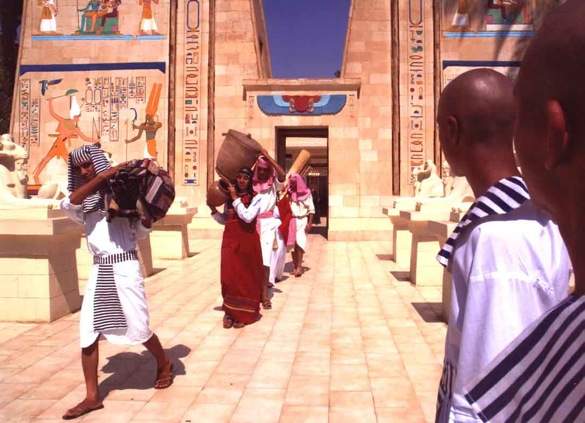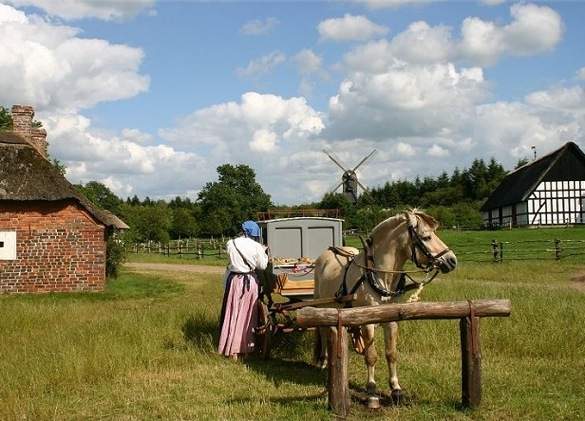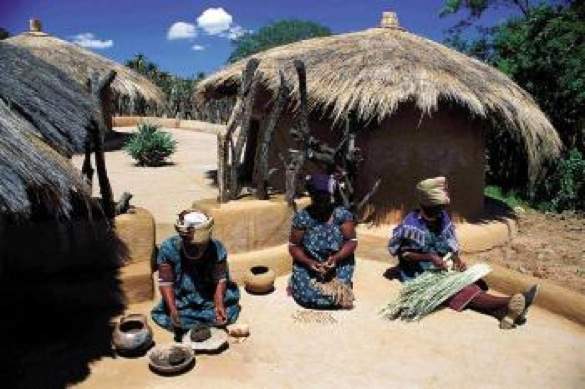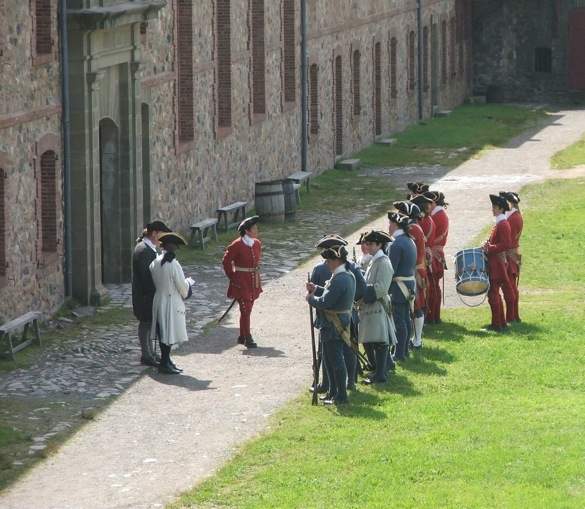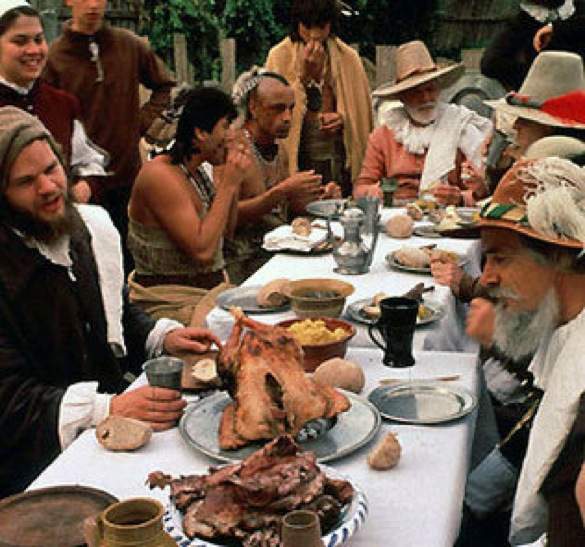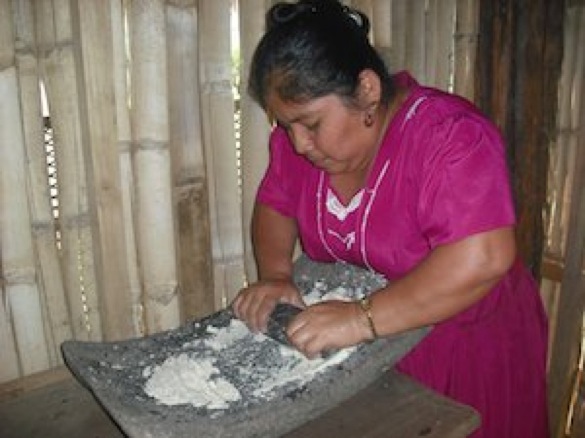Experiencing history can be much more than ruins and museums. Throughout the world there are a multitude of open air museums that recreate the past through the use of appropriately garbed reenactors. The sights, smells, tastes, and daily life of an historic culture or pivotal moment in time are resurrected to provide a learning experience unlike any endured in a classroom. But be warned, once you visit and better yet join in with one of these living history museums, you’ll never look at a two-dimensional exhibit the same way again.
The Museum Meiji-Mura: Japan
The era is the late 19th century. Japan has only just opened its doors to the West. On the street, a women in a traditional kimono passes a lady with lace gloves and a parasol. Cast off thoughts of simply visiting a Japanese tea house and walk into the world of the Meiji-Mura. Over sixty buildings from the Meiji period of 1868 to 1912 have been brought to a hillside overlooking Lake Iruka in Japan, including the entrance and lobby to the Imperial Hotel designed by Frank Lloyd Wright. A working post office, brewery, school, butcher shop, churches, and a running steam locomotive pull you to a bygone day. The streets are busy with horse drawn carriages and trolly cars. Even the menus of the restaurant reflect the time period. Museum staff dressed befitting the Meiji era complete the transformation to a pivotal moment in Japan’s history as East embraces West.
Sovereign Hill: Australia
It is 1851 and gold has been discovered near Ballarat, Australia. From a once pastoral landscape, a mining town has sprung up as golden dreams usher in a rush of the hopeful. Experience both the excitement and fear of life in the town of Sovereign Hill and the gold mines it harbors. Besides the period reenactors of townspeople, craftsman, and miners, the museum also features a nightly exhibition entitled Blood on the Southern Cross, a sound and light show featuring the Eureka Stockade story. Take a break and sit back to lean about taxes on gold and the attack on the first locals who stood against the British. In the mines a new exhibit entitled Trapped relives the mining disaster of 1882 in which 22 miners died. If gold fever overcomes the lessons of hard times and lost dreams, join in and pan the creek running next to town. The good news is the rule is finders keepers!
Kizhi State Open Air Museum: Russia
One of the oldest open air museums in Russia, Kizhi State embraces a culture more than a time period. The 89 wooden buildings housed on Kizhi Island are a legacy of craftsmanship from the people of Karelia. The largest, listed as a UNESCO World Heritage Site, is the Kizhi Progost which has 22 domes and stands 37 meters high. The intricate building technique does not use any nails, only corner joinery. Folk crafts are demonstrated in the peasant houses including embroidery, beaded jewelry, pottery, weaving, and wood carving. For a truly unique experience, visit during a festival when the old traditions come alive across the island.
The Pharaonic Village: Egypt
After visiting the pyramids, the Valley of Kings, and the ruins at Luxor, what else is their to do in Egypt? Why not see what life was really like for the ancient Egyptians? Arising from an island in the Nile, ancient Egypt once again lives and breathes. Sail into the canals to witness fields being harvested then step onto the island to enter the market, a nobleman’s or a peasant’s house, exhibits on ancient boats and Cleopatra, and a recreation of Tutankhamun’s Tomb as it was when discovered in 1922. This museum is far more than a whimsical tribute to ancient Egypt. The lifestyles, plants and animals have been carefully researched and crafted to give as authentic experience as possible to daily life in Egypt under the Pharaohs.
Hjerl Hede: Denmark
Open air museums first arose in Scandinavia and so the most opportunities to interact with the past exist in Europe. Hjerl Hede is not the oldest living history museum in Europe, but it is one of the most diverse. Encompassing a Danish village’s development from 1500 to 1900, it also boats a Forestry Museum, Museum for Peat production, old Danish livestock breeds, and a stone age settlement. From June until the middle of August as well as the three weeks before Chistmas, Hjerl Hede is filled with staff dressed in period costumes. Walk into one of the four areas of the museum and find yourself transported to a historic era. You can shop at the Butcher’s market, watch the blacksmith, cooper and coach builders, or spend time in the stone age witnessing the making of flint tools and dugout canoes while men hunt fish in the lake with bow and arrow. Wood is cut in the Forestry Museum with a steam engine and in the bog peat is harvested with a team of horses to be transported on a narrow gauge railway from 1921. The only thing missing is the time machine!
Eriiksstadir: Iceland
What better way to learn about Vikings than to visit a country founded by them? Erik the Red’s longhouse has been rebuilt on the grassy barrens of Iceland. Nearby, a Viking tent village rises from the green fields. The viking sagas come to life at this historic site where one culture leaps across the vast Atlantic to discover Greenland and then “Vinland,” becoming the first recorded European settlement in the New World. The age of viking adventure is rekindled in the hearth of the longhouse at Eriiksstadir.
Bakone Malapa: South Africa
Tucked away in South Africa on ancient village grounds is the recreation of two traditional lapas, homesteads, of the Bakone people, a sub-group of the Northern Sotho tribe. Relive village life as it was 250 years ago as current tribal members demonstrate their traditions of fire making, maize grinding, beer brewing, pottery, wood carving, bead work, grass weaving, and drum making. The living cultural and historic roots of this society are related by story telling native guides as you step back in time.
Louisbourg Fortress and Village: Canada
It is just before the period known as the Great Expulsion when the French rule the shores of Nova Scotia. On the coast of the Atlantic, French guards meet you at the gate before allowing entrance to the fortress and town where daylight hours are marked by the sound of military drums and capped cannons await a match. Enjoy traditional meals at the town’s taverns, watch lacework be handcrafted as children are shepherded to school, and walk through the fort as the garrison commander inspects the guard. Step into an era of discipline and commerce which exist at the outpost of an empire.
Plimoth Plantation: United States
Like Europe, the United States offers a multitude of Living History experiences. There is everything from Colonial Williamsburg to Wild West towns and a gamut between. Plimoth Plantation offers not only the story of the first Thanksgiving, the beginning of a cultural legacy to Americans, but it also offers it from the perspective of the living Wampanoag tribe members. To merely call this living history would be to dismiss the continuation of a 12000 year old culture. Witness the plight of the Pilgrims as they arrive in the New World and meet the native inhabitants without whose help they would have perished.<
Maya Center Mayan Museum: Belize
The Maya are more than pyramids and human sacrifices. Experience life as it was in a Mayan village while being guided by modern descendants. Here you can learn not only how coffee was brewed and corn pounded into flour to make tortillas, you are invited to join in. Learn to grind cocoa beans to make a chocolate drink and crush sugar cane while finding yourself immersed in traditional Mayan music and dance. An authentic Mayan house has been reproduced on the site allowing you to see something beyond the jungle shrouded ruins of the past.
As you see, the past does not need to be recited from cumbersome text books or elicited from crumbled walls. These are merely a few of the living history sites existing throughout the world. Wherever you are, take a moment to visit a place where history is recreated. Immerse yourself in the woodsmoke, forgotten tastes and smells, handcrafts and livelihoods of times left behind. You will find yourself learning an unforgettable lesson while having fun to boot!<
Autumn Birt got addicted to traveling while still in the womb and is finding a way to delicately remove herself from a wonderful career as a conservationist to aimlessly wander the planet. She is currently the coeditor to No Map Nomads, a site for adventure travel off the beaten path.

